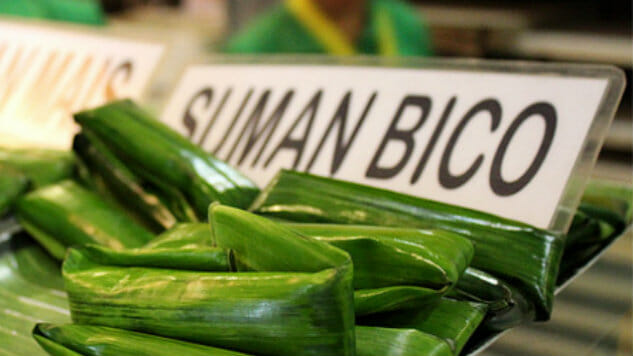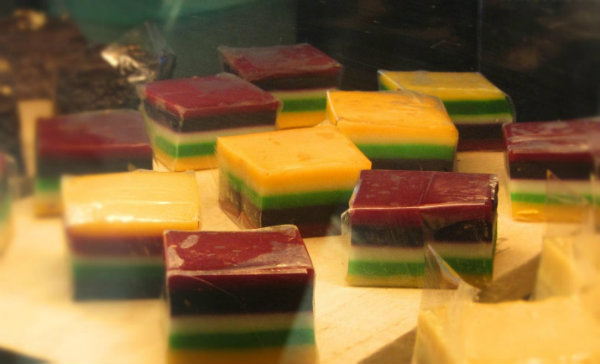5 Sticky Rice Delicacies to Try in the Philippines

Rice is the Philippines’ favorite carb. It’s a staple in every Filipino’s meal. Between 2009 and 2010, a Filipino consumed an average of 119 kilograms of rice.
While plain old white rice gets Filipinos going all day, sticky rice satisfies our deepest, darkest, sweetest cravings. Sticky rice, also called glutinous rice, is used in making the many sweet treats of the Philippines. Here are five sticky rice delicacies that are a must-try.
Suman

Suman is the country’s quintessential native delicacy. Glutinous rice is cooked in coconut milk, wrapped in palm, banana or bamboo leaves then steamed to make this rice cake. Wrapping suman is an art in itself since different shapes result in different wrappings. Tubular suman is wrapped in vertical coils while rectangular suman allows for simple folds. Others have geometric patterns like a heart and involve more complex folds.
A sugar dip gives suman that sweet kick. You can even eat it with sliced ripe mangoes. Suman is best paired with coffee or the native tsokolate eh (thick, bittersweet hot chocolate made from cacao tablets) to counter the sweetness.
Suman is available in street stalls and local eateries. Fely J’s Kitchen serves suman with sliced ripe mangoes hidden under a bed of macapuno ice cream (ice cream made of soft, jelly-like coconut flesh).
Espasol
Espasol is a rice cake originating from the province of Laguna. Glutinous rice flour is toasted until pale brown and mixed with coconut milk and sugar. The mixture is cooked over low flame with constant stirring to get that tensile consistency. You’ll know it’s ready when the mixture springs back with a slight pull. The mixture is then divided and formed into cylindrical logs and rolled in toasted rice flour.
You can easily buy espasol in bus stops and pasalubong (souvenir) shops across Laguna, particularly in the towns of Alaminos, Los Baños, Nagcarlan and Pagsanjan.
Sapin-sapin

-

-

-

-

- Curated Home Page Articles By Test Admin October 21, 2025 | 3:10pm
-

- Curated Home Page Articles By Test Admin October 21, 2025 | 2:57pm
- Urls By Test Admin October 21, 2025 | 2:57pm
- Curated Home Page Articles By Test Admin October 21, 2025 | 2:55pm
-

-

-

-

-

-

-

-

-

-

-

-

-

-

-

-

-

-

-

-

-

-

-

-

-

-

-

-

-

-

-





































